Does STOPPING Early Hip Rotation And Using Lower Half Correctly Increase Power In Baseball Or Softball Swing? | Hitting Drills To Do At Home
Discover if STOPPING early hip rotation and using the lower half correctly increases power in the baseball or softball swing. Learn hitting drills to do at home.
Softball Hitting Tips Fastpitch: Is Power ALL In The Hips?
This is Part-3 of a 3-part softball hitting tips fastpitch video series coming straight out of the Catapult Loading System online video mini-course…
Sick of struggling with getting your hitters to hit the ball hard with more consistency? This is a simple 7-module online video mini-course that will help hitters weighing less than 100-pounds, hit the ball consistently over 300-feet in 60 days. You’ll be able to dramatically increase power without sacrificing swing quality.
CLICK the Link below to…
- Part 1 – How-To Hit The Ball Consistently Hard Like Hank Aaron
- Part 2 – Head Position At Impact May Be Causing You To Lose Out On Repeatable Power [The Neck Brace Drill]
- Part 3 – [You Are Here] #1 Biggest Lie In Hitting
In this softball hitting tips fastpitch video post, we’re going to answer one of my reader’s questions…
“Ways to use your hips to create bat speed?”
Before I get to the #1 Biggest Lie In Hitting, we’ll cover:
- Inward hip turn towards catcher to load?
- Springy ‘X’ Pattern, and
- Landing open with the front foot.
Inward Hip Turn Towards Catcher To Load?

Are Lauren Chamberlain’s hips firing on their own, or was her spine pre-loaded earlier by her shoulders? Photo courtesy: YT user – Paul Arebalo
I picked up on this in High School after reading Ted Williams’s book The Science Of Hitting.
But is this really necessary?
After reading Thomas Myers’s book Anatomy Trains, I don’t believe that it is.
To me, ‘Loading the hips’ by turning the pelvis inward towards the catcher creates more challenges, than benefits.
The biggest challenge is that if the timing isn’t right, the hitter will get stuck landing with a closed front leg at landing (front toe less than a 45-degree angle).
CLICK HERE for a Zepp swing experiment I did on landing closed versus open, and the affect on average bat speed.
Olympic Javelin Throwers, Boxers, and Sprinters do just fine without using an inward turn of the pelvis, away from their target, before throwing, punching, or running.
Springy ‘X’ Pattern
I don’t want to beat a dead horse, so here are two great video blog posts I did, that apply to softball hitting tips fastpitch, talking about the Springy ‘X’ Pattern:
Landing Open with the Front Foot
The guys at ZenoLink are awesome! They find the truth behind human movement science. This video discusses how the lower body position or stride setup will dictate how well you create and utilized ground reaction force to initiate the swing process and develop power and bat speed.
They found the optimal degree that the stride foot must be open at landing to be around 65-degrees (watch around the 2:00 mark)…
So WHY are we teaching our young hitters to stride closed?!!
To summarize…
‘Loading and exploding the hips’ by inwardly turning the pelvis towards the catcher can cause the hitter to land closed. If the hitter lands closed, then bat speed WILL go down, according to the results of my Zepp swing experiment, and to the guys at ZenoLink. As a result of bat speed going down, so will Ball Exit Speed.
‘Firing the hips’ is an over-coached cue, if anything, let’s ‘load and explode the shoulders’, not the hips. Us hitting coaches MUST shift our focus above the pelvis, into the shoulders by way of the Springy ‘X’ Pattern.
So, what is the #1 Biggest Lie In Hitting, as it relates to softball hitting tips fastpitch?
That we MUST ‘load and explode the hips’.
You see,
We have to get away from learning inside baseball and softball hitting circles. We must first learn human movement science, then break away, and begin thinking creatively about how to apply these human movement “rules”, that are validated by science, to hitting a ball.
- Fix Late Swings Fast: 2025 Pitch Recognition & See-Decide-Swing Training for Youth Baseball Power Hitters - October 6, 2025
- Safe Youth Weighted Bat Training: Proven Overload/Underload Drills to Increase Exit Velocity in Games Starting Tonight - September 29, 2025
- AI Coaching Course 2025: Youth Baseball & Softball Practice Plan + Off-Season & In-Season Workout Builder Fast - September 23, 2025

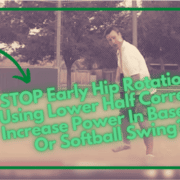


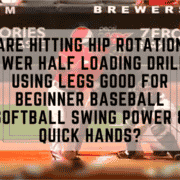
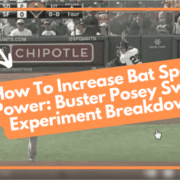
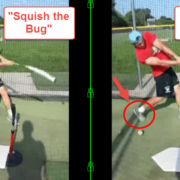



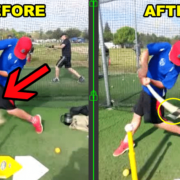



Joey,
Great job! So, we are going against the picture on page 40 in “The Science of Hitting” by Ted Williams. Perhaps that picture is to blame for the “load and explode” teaching cue? However, on the two previous pages of the book, Williams, in a sequence of pictures, does not turn is front side pelvis away from the pitcher. Clips of Williams on YouTube show that he does not turn his front side pelvis all that much.
Watching clips of Bautista and Donaldson, though they have more exaggerated leg lifts, they still seem to keep their belly buttons parallel to the plate. I guess this excellent article you did will cause some discussion.
I agree with you that this counter-movement, as Williams called it, is the most misunderstood part about hitting.
I agree Joe. I think Ted Williams was way ahead of his time with his ability to do great things, and to teach exactly how he did what he did. Not perfect, but waaaaay better than many of the players past and present that talk hitting today. ‘Load & explode the hips’ comes A LOT from the strictly rotational guys. This isolated hitting philosophy has more holes in it than swiss cheese 😉
Joey,
Yep, Williams figured it out and largely through self study and his own intuition.
I think you, more that a lot of people out there, understand the importance of using effective terminology in developing cues to aid in teaching hitting.
Williams might have turned his front hip past neutral. But I think that the wide stance, no stride, stationary back foot (no skip) days are coming to an end.
I totally agree Joe. With access to the best in technology and information resources, we have no excuses now 😉
Joey,
I think that the rotational guys overlooked some things, that’s if they were patterning their hitting system based on what Williams did. He didn’t just sit back on his back foot. He did skip it. He also had a stride, not as long as Mays and Mantle, but a stride nonetheless. How they got the no stride/sit back on the back foot, I don’t know. It’s not what Williams did into contact. But Williams didn’t take his theories as far as you have. If he was alive today he would have because he sought knowledge about hitting but was limited by the lack of scientific knowledge and technology of the day.
Again Joe, I agree. Today, if Williams were still alive, he’d be in hitting heaven (pardon the pun). Yeah, even David Wright has a small amount of FoMo. Not what I’d like, but some. It’s very hard to ‘sit and rip’ using a wide or no-stride stance. A hitter doing this would wear their body out at some point early in their careers. David Wright also lands closed, which slows down bat speed and can be very troublesome on the body as well. Maybe a combo of these things are causing the Mets Captain so much pain over the last 5 years or so. In other words, it’s finally catching up to him.
What are your thoughts on ZenoLinks findings regarding the closed stride direction of 10 degrees? Possible Zepp experiment?
Fred, okay found your comment. Can you post a link to that ZenoLink video? Or did I miss it in the video I posted? If the stride is closed by 10-degrees, then it makes sense that they say their findings show a 65-degree open foot angle at landing. It will definitely be worth Zepp testing.
The stride direction topic begins 1:20 into the video you posted.
Got it!! Yes, just what I thought, he’s saying the stride direction should be 10-degrees closed, meaning the stride foot ankle should be 10-degrees towards the plate in relation to the back ankle. He’s not meaning to land with a closed front foot. Later in the video, he says to have the stride foot open to 65-degrees at landing.
Looking forward to see if Zepp agrees with their findings. 🙂
Me too Fred, me too 🙂 I think, more importantly, we have to look at what’s parts of the foot apply pressure to the ground during the load and Final Turn phases of the swing. I’m looking into this more right now, so stay tuned…